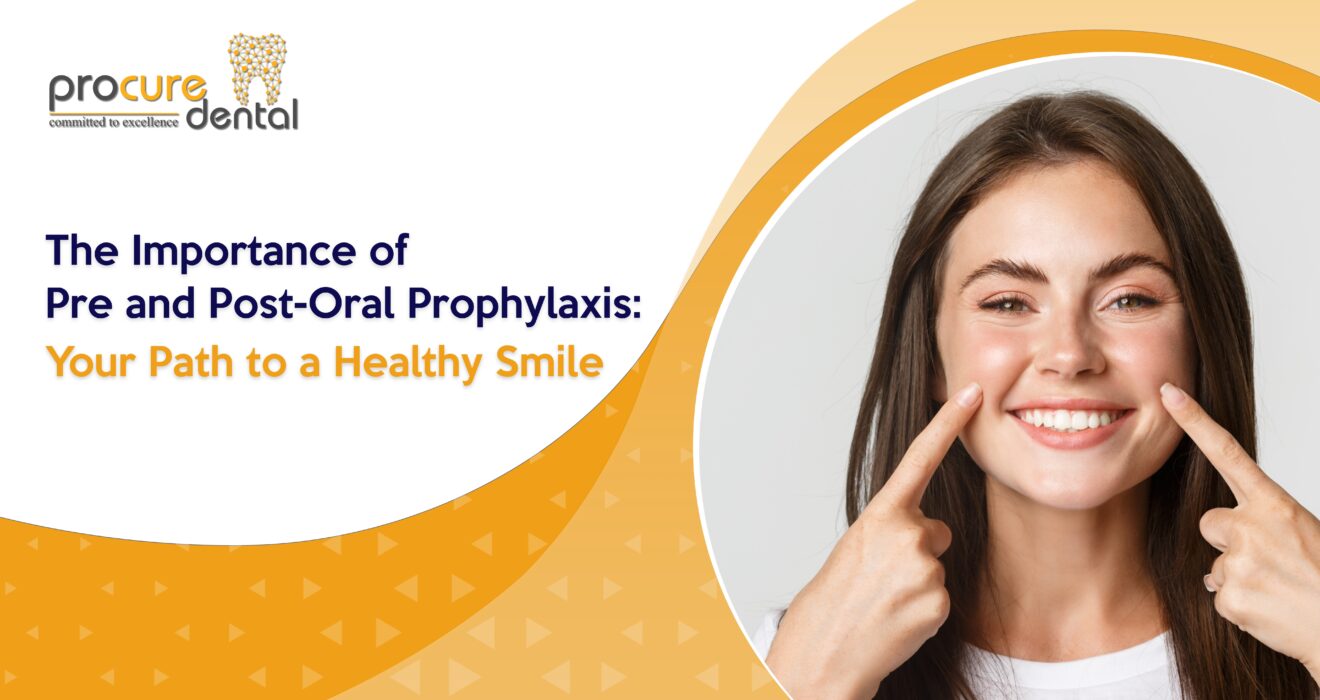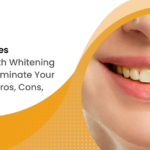The Importance of Pre and Post-Oral Prophylaxis: Your Path to a Healthy Smile
Maintaining a healthy smile goes beyond regular brushing and flossing. Oral prophylaxis, also known as professional dental cleaning, plays a crucial role in preserving your oral health. In this blog post, we’ll delve into the significance of pre and post-oral prophylaxis care and provide you with essential tips to optimize your oral hygiene routine.
Pre-Oral Prophylaxis: Preparing for a Clean Slate
1. Consistent Oral Hygiene Routine:
Establishing a consistent oral hygiene routine is the foundation of good oral health. Brush your teeth at least twice a day using fluoride toothpaste and a soft-bristle toothbrush. Don’t forget to clean between your teeth with floss or interdental brushes to remove plaque and prevent tartar buildup.
2. Regular Dental Check-ups:
Scheduling routine dental check-ups is key to maintaining optimal oral health. Your dentist will perform a comprehensive examination, identify any underlying issues, and recommend oral prophylaxis when necessary. By addressing concerns early on, you can prevent potential complications and maintain a healthy smile.
3. Effective Communication:
Open communication with your dentist is vital. If you have any oral health concerns, such as bleeding gums, sensitivity, or bad breath, don’t hesitate to share them during your dental visit. Your dentist can provide personalized advice and tailor the oral prophylaxis process to meet your specific needs.
4. Mindful Food Choices:
Certain foods and drinks can stain your teeth and contribute to oral health problems. To maintain a brighter smile, limit the consumption of staining agents such as coffee, tea, red wine, and tobacco products. Opt for a balanced diet rich in fruits, vegetables, and lean proteins to support overall oral and systemic health.
Post-Oral Prophylaxis: Sustaining the Benefits
1. Follow Aftercare Instructions:
After your oral prophylaxis, your dentist will provide specific aftercare instructions. These may include avoiding hard or sticky foods, rinsing with an antimicrobial mouthwash, or using prescribed oral care products. Adhering to these instructions will help maximize the benefits of the cleaning and promote lasting oral health.
2. Maintain Oral Hygiene:
To prolong the effects of oral prophylaxis, continue practicing good oral hygiene habits. Brush your teeth twice a day, floss daily, and incorporate an antimicrobial mouthwash into your routine. This will help control plaque accumulation, prevent tartar formation, and reduce the risk of dental issues in the future.
3. Monitor Your Oral Health:
Stay vigilant about any changes or issues in your oral health. If you notice bleeding gums, tooth sensitivity, persistent bad breath, or any other concerns, consult your dentist promptly. Early detection and intervention can prevent potential complications and maintain a healthy oral environment.
4. Schedule Regular Dental Visits:
Regular dental check-ups and cleanings should remain a priority. By scheduling routine visits, you can ensure ongoing oral health maintenance, address any emerging issues promptly, and receive professional guidance to optimize your oral hygiene routine.
Conclusion:
Oral prophylaxis is a fundamental component of comprehensive dental care. By following the recommended pre and post-oral prophylaxis guidelines, you can pave the way to a healthy smile. Remember, a proactive approach to oral health will not only enhance your dental well-being but also contribute to your overall health and well-being.
Take charge of your oral health today, and let oral prophylaxis be your ally on the journey to a radiant and healthy smile.



